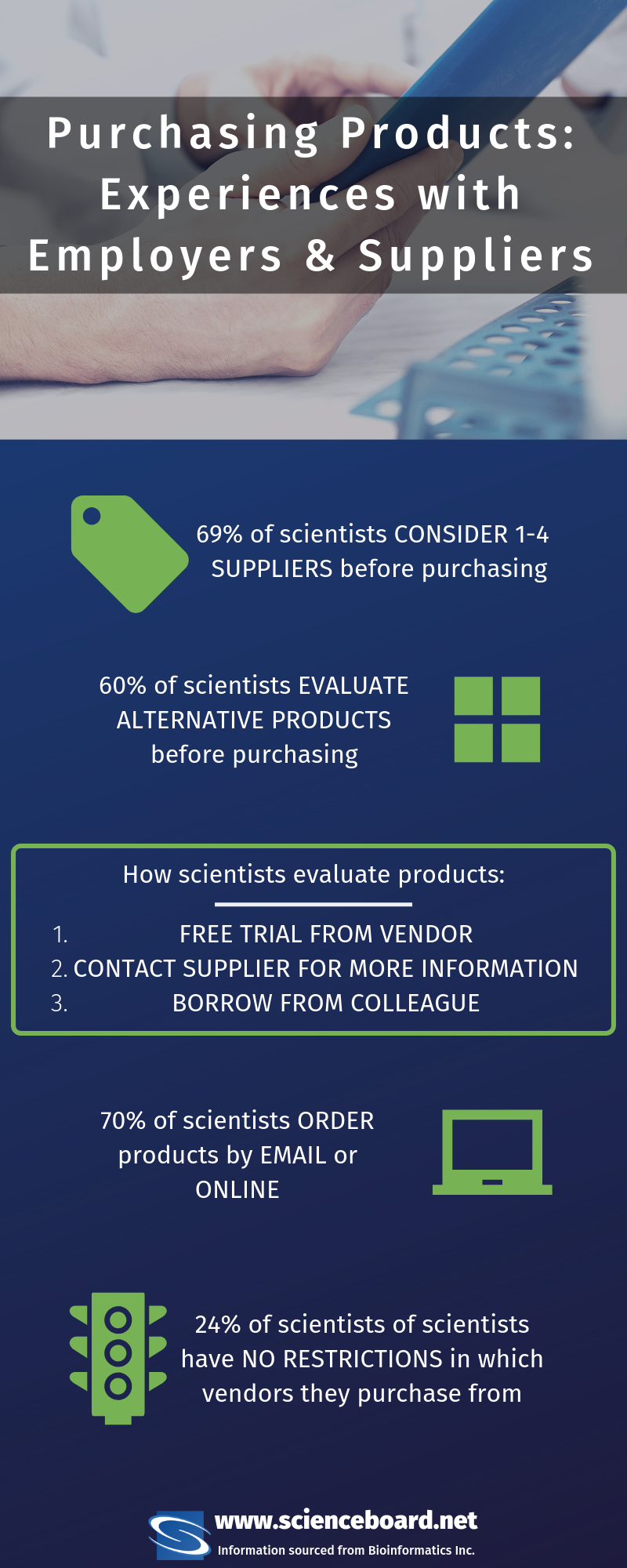June 25, 2019 -- Recently, we asked over 900 members of the SAB to tell us more about how they purchase products through life science suppliers, and the factors that influence their selection of supplier.
Given that purchasing can be subject to different rules from department to department within the same institution or occasionally employer, we thought you’d like to know about some of the most interesting results from this project, to see how your experiences compare to other scientists.

When making purchases, scientists rarely only consider a single product. Most often, scientists report that they look at 1-2 additional products when they are looking to purchase a specific product. Scientists also typically evaluate other products during the purchasing process. This may be due to institutional or employer requirements to submit multiple quotes before buying a desired product, or just a desire to make sure the right product is purchased.
Prior to purchasing, scientists identify products that they are looking to buy using their personal networks, publications, and the internet most often. Similarly, scientists are using these sources of information to find alternative products to evaluate during their purchasing process. In order to evaluate these alternative products that they’ve learned about, scientists ask for free trial products, borrow test products from a colleague, or contact the supplier to get product information. So, the next time a colleague asks to borrow some antibodies, or to run some samples on your flow cytometer, maybe they’re planning on buying their own soon!
Scientists typically place their orders directly to a supplier or a distributor, and ordering is typically done by e-mail or online ordering. E-procurement and phone ordering account for a much smaller amount of orders placed directly to suppliers or distributors. For some scientists, the type of ordering method they use most often to place orders is dictated by their employer or institution. This is particularly true of e-procurement systems. So, if you’ve ever wondered why there’s pressure to use certain kinds of purchasing channels over another, it is likely a top down initiative!
These top down initiatives lead to an overall perception by scientists that employers and institutions are the biggest barrier to purchasing products and services that they are interested in. Barriers within employers and institutions can include approved or preferred vendor lists; just under a quarter of scientists report that they don’t have any restrictions on what vendors they may purchase from! Scientists see vendor list restrictions as being based on negotiations between suppliers and their institution/employer, what product types they are looking to buy, and price thresholds. Some scientists see their labs as being able to influence these lists by making recommendations to purchasing departments, but for others, decisions are made by committee, or by senior management.
Have you or your lab ever encountered difficulties getting a supplier added to a preferred or approved vendor list? Or have you been able to successfully navigate getting a supplier you want to buy from to your approved supplier list?
Other articles you may be interested in:
- Customer service and technical support: From your perspective
- Scientists Discuss Career Satisfaction
Copyright © 2019 scienceboard.net


